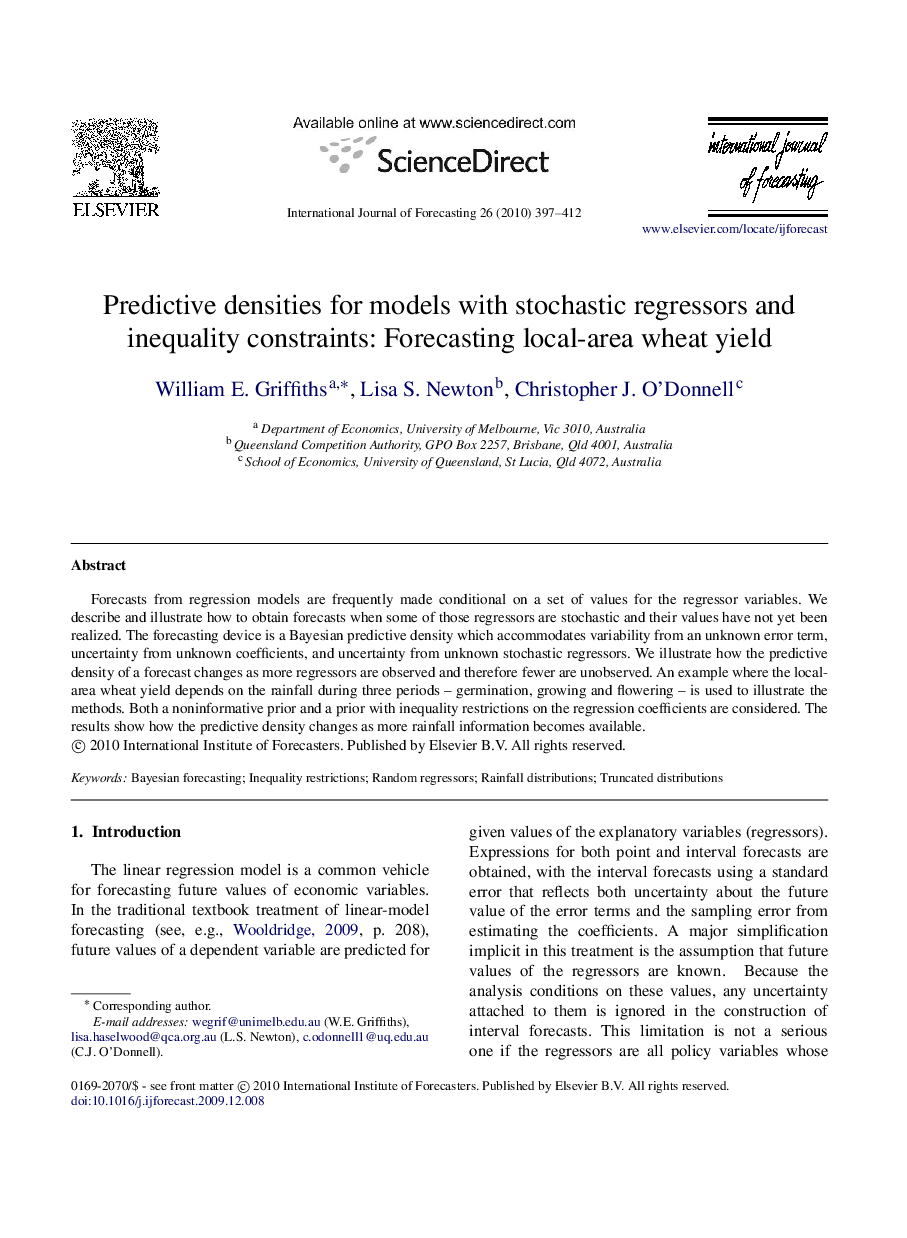| Article ID | Journal | Published Year | Pages | File Type |
|---|---|---|---|---|
| 997671 | International Journal of Forecasting | 2010 | 16 Pages |
Forecasts from regression models are frequently made conditional on a set of values for the regressor variables. We describe and illustrate how to obtain forecasts when some of those regressors are stochastic and their values have not yet been realized. The forecasting device is a Bayesian predictive density which accommodates variability from an unknown error term, uncertainty from unknown coefficients, and uncertainty from unknown stochastic regressors. We illustrate how the predictive density of a forecast changes as more regressors are observed and therefore fewer are unobserved. An example where the local-area wheat yield depends on the rainfall during three periods–germination, growing and flowering–is used to illustrate the methods. Both a noninformative prior and a prior with inequality restrictions on the regression coefficients are considered. The results show how the predictive density changes as more rainfall information becomes available.
